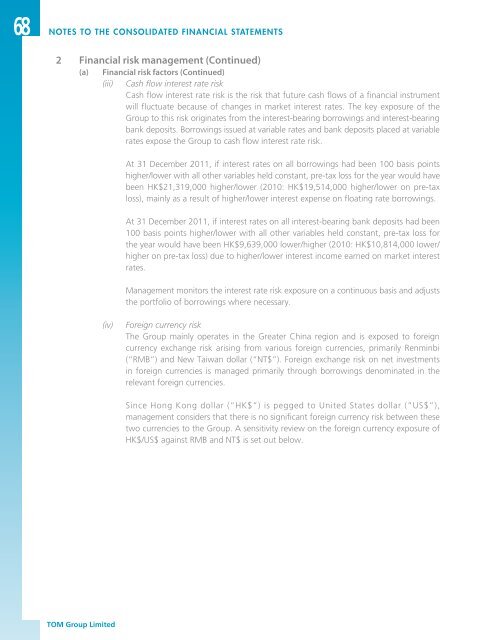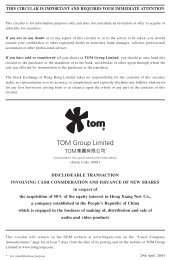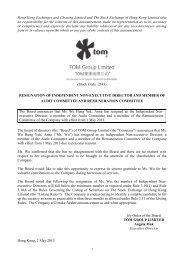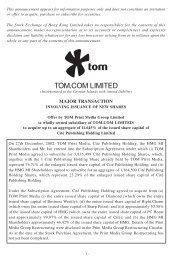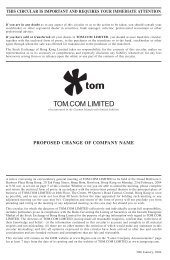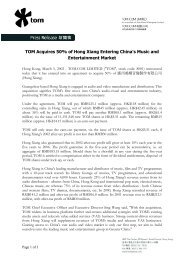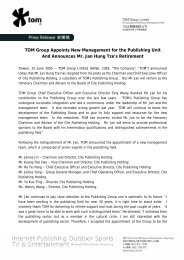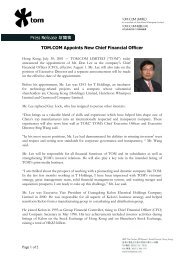2011 Annual Report - TOM Group
2011 Annual Report - TOM Group
2011 Annual Report - TOM Group
Create successful ePaper yourself
Turn your PDF publications into a flip-book with our unique Google optimized e-Paper software.
68<br />
NOTES TO THE CONSOLIDATED FINANCIAL STATEMENTS<br />
2 Financial risk management (Continued)<br />
(a)<br />
Financial risk factors (Continued)<br />
(iii) Cash flow interest rate risk<br />
Cash flow interest rate risk is the risk that future cash flows of a financial instrument<br />
will fluctuate because of changes in market interest rates. The key exposure of the<br />
<strong>Group</strong> to this risk originates from the interest-bearing borrowings and interest-bearing<br />
bank deposits. Borrowings issued at variable rates and bank deposits placed at variable<br />
rates expose the <strong>Group</strong> to cash flow interest rate risk.<br />
At 31 December <strong>2011</strong>, if interest rates on all borrowings had been 100 basis points<br />
higher/lower with all other variables held constant, pre-tax loss for the year would have<br />
been HK$21,319,000 higher/lower (2010: HK$19,514,000 higher/lower on pre-tax<br />
loss), mainly as a result of higher/lower interest expense on floating rate borrowings.<br />
At 31 December <strong>2011</strong>, if interest rates on all interest-bearing bank deposits had been<br />
100 basis points higher/lower with all other variables held constant, pre-tax loss for<br />
the year would have been HK$9,639,000 lower/higher (2010: HK$10,814,000 lower/<br />
higher on pre-tax loss) due to higher/lower interest income earned on market interest<br />
rates.<br />
Management monitors the interest rate risk exposure on a continuous basis and adjusts<br />
the portfolio of borrowings where necessary.<br />
(iv)<br />
Foreign currency risk<br />
The <strong>Group</strong> mainly operates in the Greater China region and is exposed to foreign<br />
currency exchange risk arising from various foreign currencies, primarily Renminbi<br />
(“RMB”) and New Taiwan dollar (“NT$”). Foreign exchange risk on net investments<br />
in foreign currencies is managed primarily through borrowings denominated in the<br />
relevant foreign currencies.<br />
Since Hong Kong dollar (“HK$”) is pegged to United States dollar (“US$”),<br />
management considers that there is no significant foreign currency risk between these<br />
two currencies to the <strong>Group</strong>. A sensitivity review on the foreign currency exposure of<br />
HK$/US$ against RMB and NT$ is set out below.<br />
<strong>TOM</strong> <strong>Group</strong> Limited


